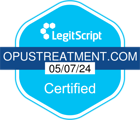When you think about drugs and addiction, what do you think of? Illicit drugs like heroin, meth, and cocaine are usually what come to mind. However, the reality is that some of the most dangerous drugs available come straight from your doctor’s office. With prescription drugs being one of the most significant factors facing addiction today, we need to ask, ”Are internal medicine doctors basically drug dealers?”
It’s a controversial topic, but you’ll often hear stories where people say, “Basically, my drug dealer was a doctor.” Why is this happening, and what can we do about it?
The Most Dangerous Prescription Drugs
When discussing the topic of “are internal medicine doctors basically drug dealers,” you first have to understand the truth about prescription drug abuse. Some of the most common prescription drugs also top the list of deadliest drugs, Including:
- Prescription opioids: Doctors have been at the center of the opioid crisis, which we talk about more below. The rate of people dying from opioid overdoses has gone up enormously over the past ten years. Opioid prescriptions are chronic pain relievers that include oxycodone, hydrocodone, and fentanyl.
- Methadone: Methadone is a prescription painkiller technically, but it’s used primarily as medication-assisted treatment to help people with opioid use disorder. It has weaker effects than other opioids, so it can help people stop using illegal drugs like heroin and receive treatment. Methadone does have a potentially beneficial role in addiction treatment, it can also be dangerous and deadly. It is safer than heroin, but opioid overdose is still possible, as is misuse.
- Benzodiazepines: Professionals use this class of drugs to treat sleep disorders and anxiety. Xanax, Valium, and Klonopin are brand-name drugs classified as benzodiazepines. These medications potential to become addictive. You can overdose on benzodiazepines as well, and this risk is even higher if you use them along with other central nervous system depressants, such as opioids.
- Stimulants: Doctors prescribe stimulant drugs, like Adderall and Ritalin, to treat attention deficit disorder (ADD), but they are also abused recreationally and have addiction potential.
The Opioid Epidemic
Most doctors are well-intentioned. However, they did inadvertently play a role in the opioid epidemic.
Since 1999, the number of drug overdose deaths has quadrupled. In 2019, more than 70,630 deaths from drug overdoses and 70% of those involved an opioid.
The opioid epidemic has three waves.
- The first wave started with primary care physicians. They began heavily prescribing opioids in the 1990s. While the number of chronic pain patients didn’t increase much over the years, opioid prescribing did.
Many people became addicted to opioids that doctors legitimately prescribed for their chronic pain issues. However, doctors didn’t warn them of this potential, and drug companies were touting opioids as safe and non-addictive.
- The second wave of the opioid epidemic began in 2010 as the nation saw a dramatic uptick in heroin overdose deaths. Heroin is an illicit opioid that works in many of the same ways as prescription opioids.
People who took prescription opioids and became addicted would sometimes use heroin because it was cheaper and easier to get.
- Then, there was a third wave in 2013. The third wave of the opioid epidemic involved synthetic opioids like fentanyl.
Even though most doctors did not mean to contribute to the progressing pandemic, there were some doctors that intentionally exploited the addictive nature of the medications for profit.
A Doctor’s Current Role in The Opioid Epidemic
Doctors can’t plead ignorance about the impacts of opioids now. Doctors play a pivotal role in bringing the opioid epidemic under control, and most understand that well.
- Physicians have an ethical responsibility to prescribe opioids and other dangerous or potentially addictive drugs responsibly.
- Many medical schools are starting to integrate addiction and pain training into their curriculum.
- Physicians are being asked to take specific steps, including limiting their prescribing of opioids and helping patients understand the risks thoroughly. In situations where it might be appropriate to prescribe opioids, physicians should minimize the number of prescribed tablets.
- According to former FDA commissioner Dr. Scott Gottlieb, reducing unnecessary exposure is the key to reducing new addictions.
- Doctors are also being trained to help patients understand that it’s okay to experience a little pain following procedures and conditions. The goal is no longer zero pain, and doctors have to help patients understand that detail.
- Doctors are also increasingly suggesting Tylenol and ibuprofen as first-line treatments and opioids only as a last resort.
None of this is to say that every doctor acts as a drug pusher. However, there are still people asking, “Are internal medicine doctors basically drug dealers?” Education and enforcement are going to be critical to help stop this problem going forward.
Pain Clinics
If you’ve ever heard someone say, “my drug dealer was a doctor!” the patient could be referring to one way doctors did indeed become dealers… pain clinics.
- Pain clinics began popping up all over the country, dispensing prescription opioids.
- Clinic employees were found handing out prescriptions without ever seeing or evaluating patients. For example, when law enforcement officials raided a Tennessee pain clinic, there wasn’t even any medical equipment on site.
- Many doctors, nurses, and other care providers only worked a few hours a week in the clinic and earned money by signing prescriptions in these clinics.
- In recent years, many states and federal authorities have started prosecuting employees of pain clinics as they do other drug dealers. For example, they charge them with crimes in line with what they would charge a heroin dealer.
- Doctors have always been subject to legal penalties for overprescribing, but now, they are sometimes facing federal drug trafficking charges, which can carry jail time.
Doctors Overprescribing Medications
A prime example of a doctor acting as a drug dealer occurred with Dr. Barry Schultz. In the early 2000s, Schultz was practicing in Florida, which was once a haven for opioid users looking for a prescription pain reliever. In 2010 and 2011, there were more pain clinics than McDonald’s in Florida.
Your pain doctors could shop for pharmaceutical companies and get a prescription right away, with “patients” often paying cash. Dr. Schultz was featured on 60 Minutes after he intentionally prescribed massive amounts of addictive opioids. The Florida physician was sentenced to 157 years for his role in the opioid epidemic.
The prosecutor on the Schultz case described him as one of the most notorious drug dealers in the state. DEA records showed that in 2010, Dr. Schultz prescribed one patient almost 17,000 of the most potent oxycodone pills available in seven months; Schultz was making around $6,000 a day prescribing and selling opioids.
Seeking Treatment
The opioid epidemic is a very serious threat to the people of the United States and currently, opiates are the most common drugs people seek treatment for. Most addictions involving opiates require medically assisted detox services, which all treatment centers do not offer.
Thankfully Opus Health offers medically assisted detoxification and can help you or your loved one with any stage of your opiate addiction.
To learn more contact our care coordinators to discuss treatment program options and details.
We all deserve help sometimes, your help is just a phone call away.














